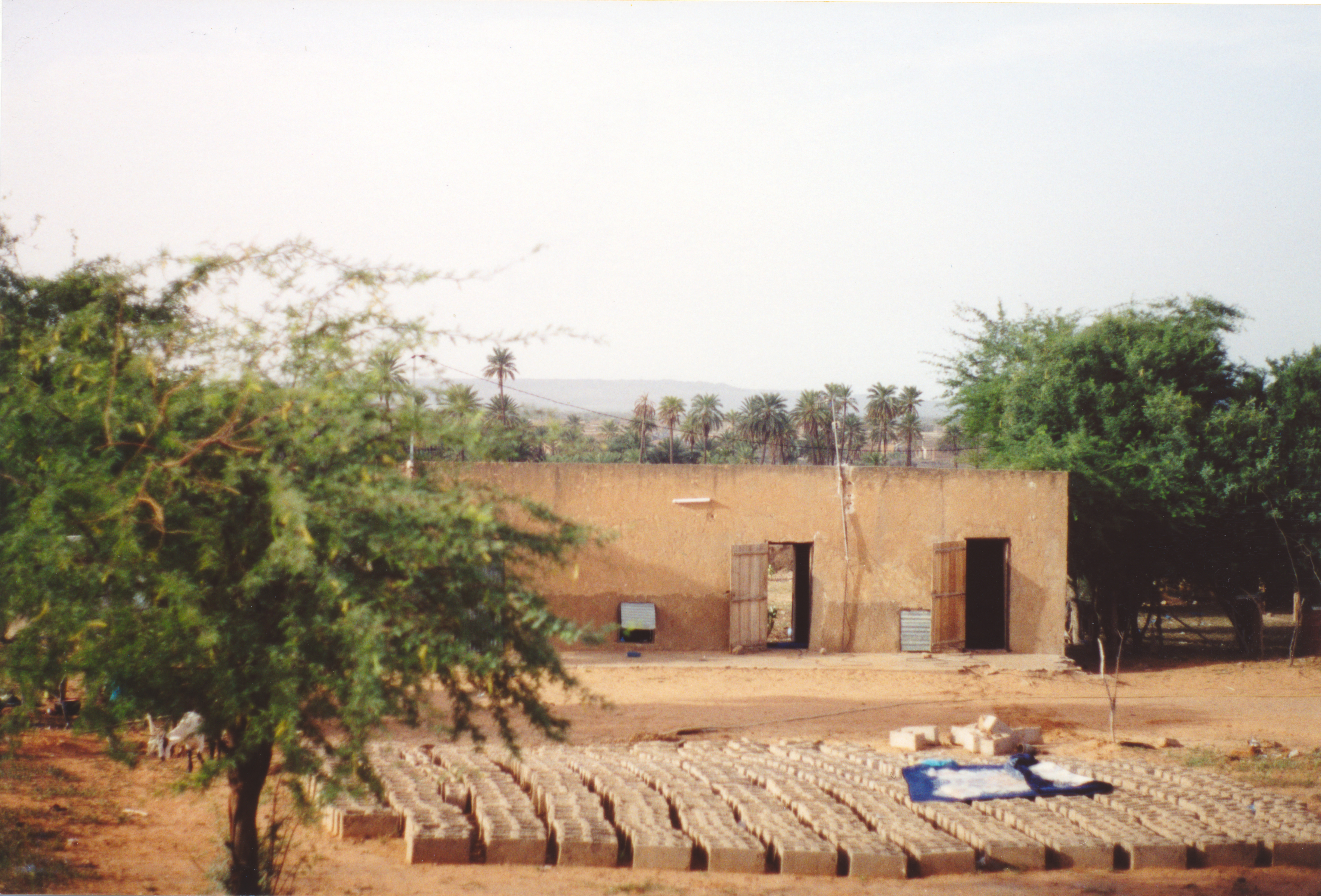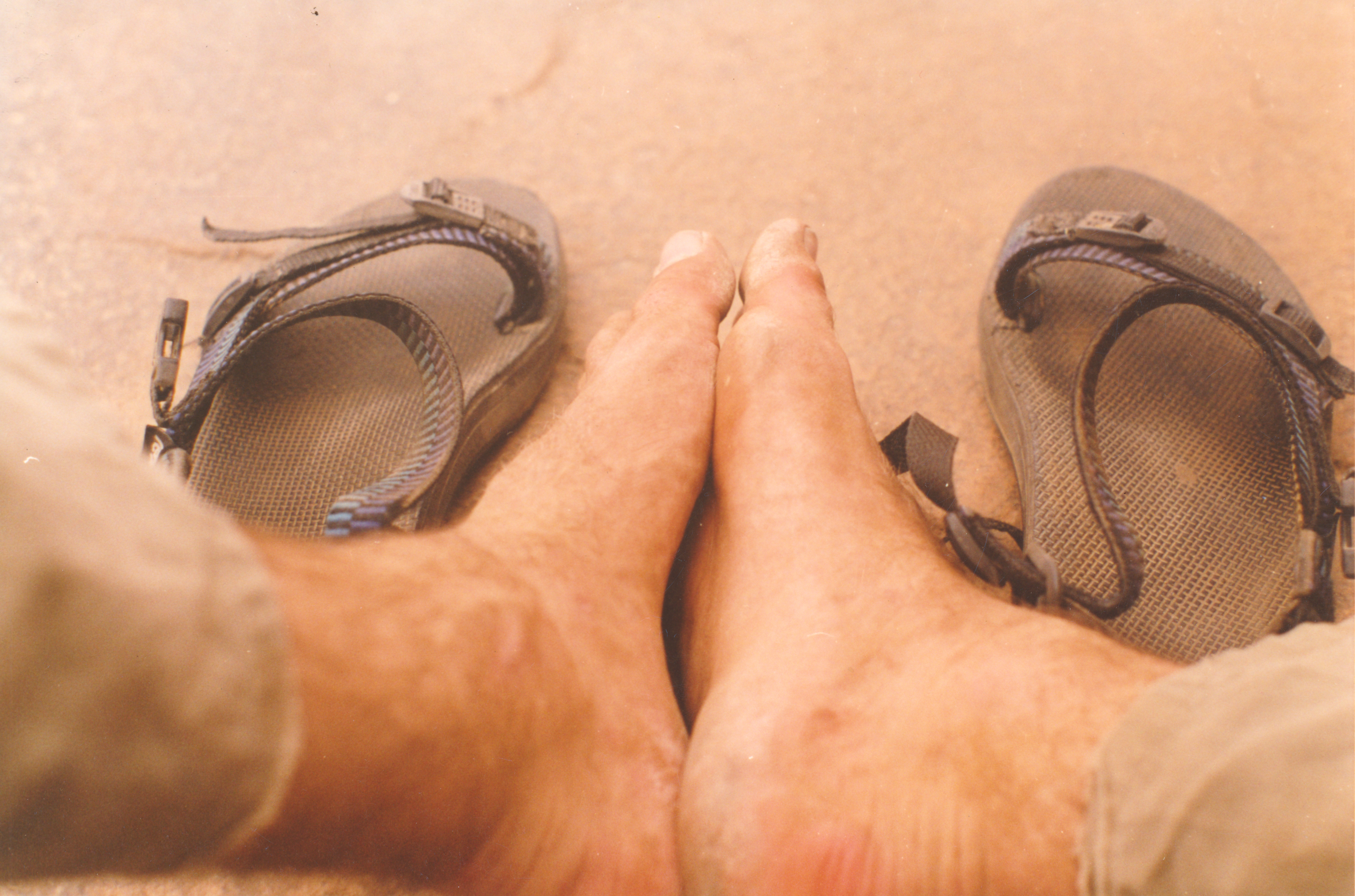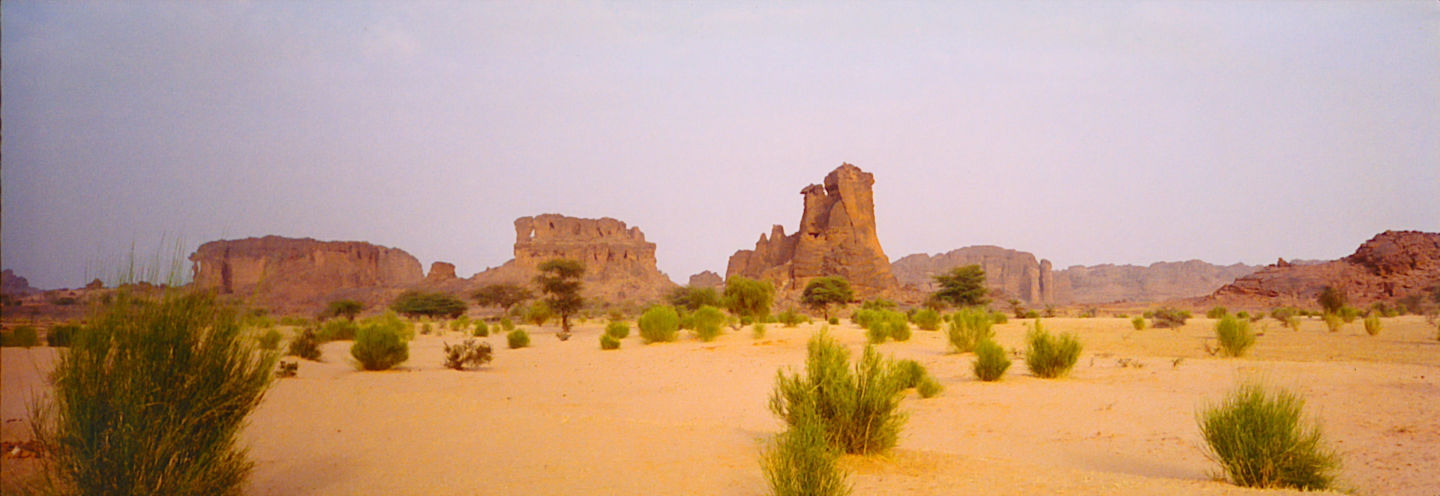February 28, 2002, was one of those good days when I had time to just sit and think about how incredible and satisfying it felt to be so far from home, still alive, still breathing, still myself. There were times, in the evenings especially, when the heat and dust of the day had settled, when I could sit out on my mat with a book or letter or journal and appreciate Tintane’s beauty. My house was elevated a bit up a hill and looked down on the expanse below. The wadi below would fill after rains and was surrounded by gardens and date palms. Beyond that was more houses and sandy scrubland bordered finally by the face of plateaus against the horizon.

It could be beautiful and serene, given the right weather and right state of mind. Since most of my journal entries are about the not-so-good days, I’m lucky I wrote about this one.
February 28, 2002This place is really nice. I rediscovered my late afternoon hobby of sitting on my mat as the sun goes down, and it’s nice.
The air is clear and still. Clouds define the usually distanceless blue—hard contoured lines wisped back like great tines in the sky.
Thought’s come to me a few times the past couple days: Tintane could be paradise. If it weren’t for the trash, animal shit (and animal carcasses), and bad food, Tintane would be incredible.
The plateaus off in the distance were always bone dry every time I made the trek out there, but there was evidence of either a much wetter past or thousands of years of accumulated erosion from infrequent rain. Some escarpments had smoothed out chutes carved all the down, about the width of a person. It’s a good thing no one had a skateboard because I probably would have tried rolling down, just for fun. Having fun in Mauritania often involved an element of danger.
On March 2, with my good mood still in full effect, I took a day trek out to the plateau. I left with a bag full of water bottles, some snacks, a loaf of bread and a tin of sardines. I made notes on the way out of where there were water wells in case I needed some emergency water supplies. The wells seemed to be used mostly for watering cattle and camels and would almost certainly make me sick, but in the wise words of our Peace Corps doctor, in case of emergency “drink now, treat later.”
As is often the case, I don’t have photos of this trek, or at least I can’t find them. I thought I had a picture of some rock art I found on the protected underside of a boulder out there. It was a collection of small geometric designs, maybe eight inches wide each in dark red pigment. One was a circle divided into quarters. There are some extensive rock art sites in Mauritania (see the Trust for African Rock Art for examples); what I saw was similar in style but nonfigurative and on a much smaller scale.
On the way home, I began to wonder whether I really would need to draw some water from the wells. I was fatigued and running a little low. I wrote about it the next day:
March 3, 2002
I overdid it yesterday. Went to the mountain again. Fun, and pleasantly solitary, but too much walking. It’s almost too much for a day trip.
On the way back I had to keep myself from stopping to sit down. My toes have blisters. My heel split. It hurts to walk.
Apparently that’s all I had to say about it. Heel splitting sounds dramatic—and it is painful—but it happened to me several times since I did nothing to care for the thick shell of dry skin that the desert gave my flip-flopped feet. And wasn’t enough to end my good mood. That came crashing down the next day.
My March 4 journal entry begins: “My good mood is over.” I’ll keep the rest to myself, at least for now.


